Before you start:
Check if your fisheye camera is compatible with Qdewarp. For the list of compatible cameras, see https://www.qnap.com/go/compatibility-qvr-pro?fisheye_dewarp=true.
Add the fisheye camera to QVR Pro.
Check the camera brand name and model. Qdewarp does not support ONVIF cameras.
Install QVR Pro Client.
QVR Pro supports most standard fisheye cameras available in the market. It includes the Qdewarp technology to convert distorted parts of original images into proportional ratios. QVR Pro allows you to view a single fisheye camera’s image from up to nine simultaneous channels and from different angles. It also allows cross-platform hardware-accelerated decoding for fisheye camera images. QVR Pro ensures higher surveillance performance for greater security, while providing deployment flexibility.
1. Configure the fisheye camera.
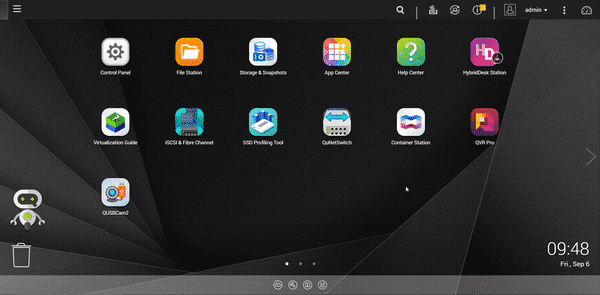

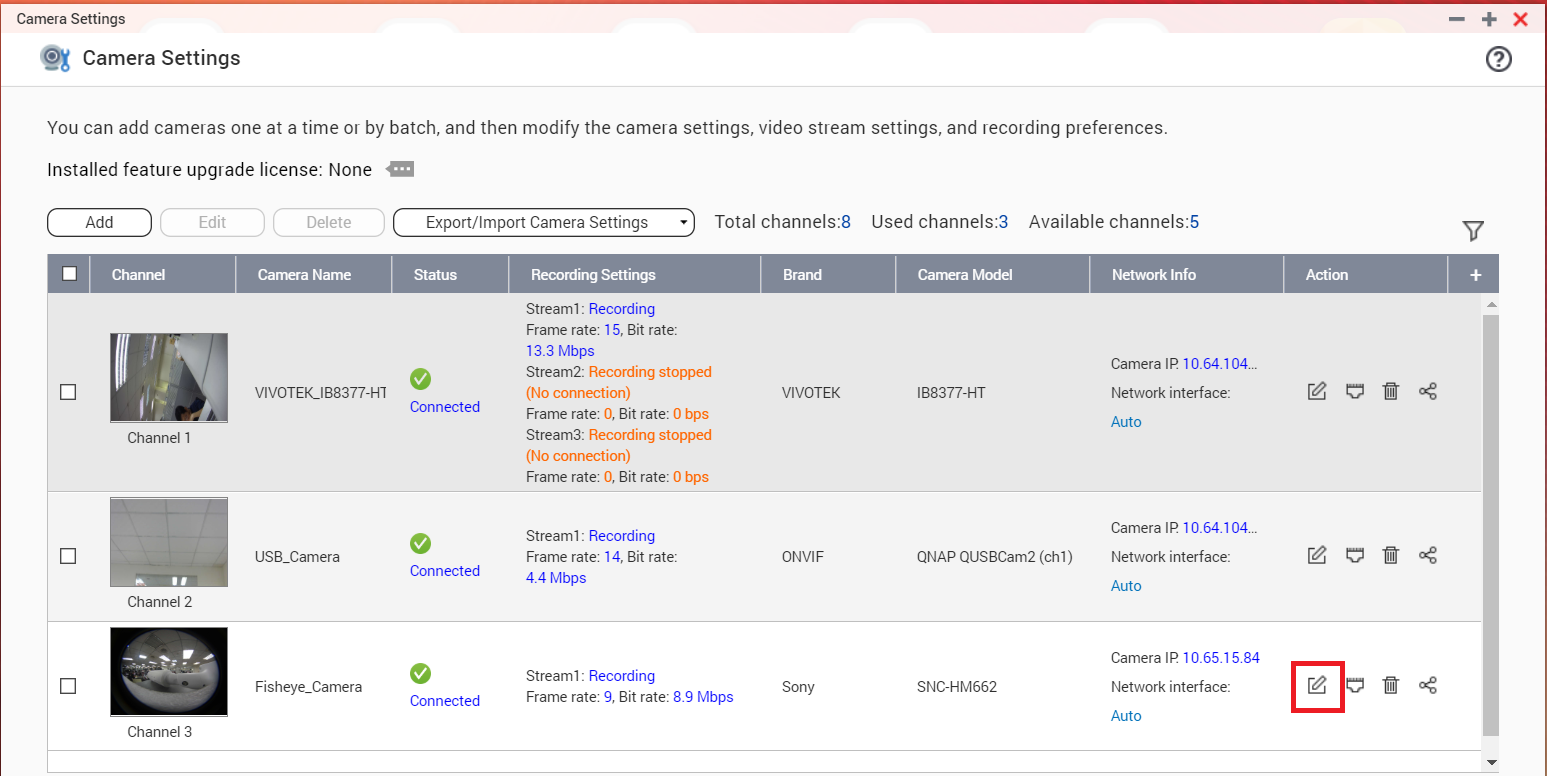
The Edit screen appears.

The Stream Settings screen appears.

e. Click Apply.
2. Dewarp the videos.
a. Click QVR Pro Client from the desktop or main menu.
b. On QVR Pro Client, select a fisheye camera or a view that contains a fisheye camera.
Note:
Ensure that the camera is online by looking for the  icon. If the camera is offline, go back to QVR Pro and check the camera settings.
icon. If the camera is offline, go back to QVR Pro and check the camera settings.
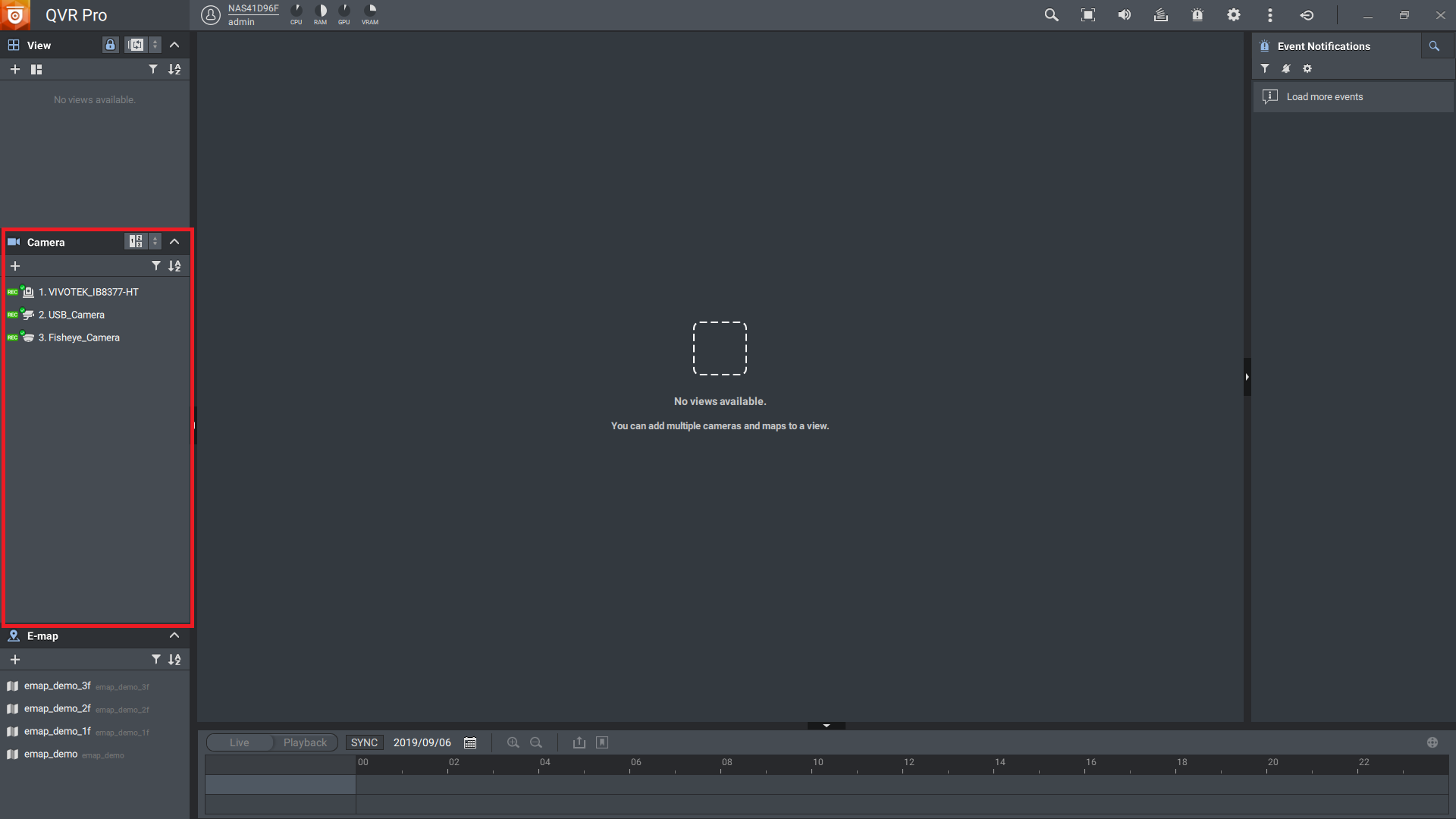
QVR Pro Client opens the selected view or camera.
c. Perform one of the following tasks.
Click inside the video frame to select a fisheye camera.
Position the mouse pointer over the camera until the task bar appears.
d. Click  .
.
e. Perform one of the following tasks.
Task
Steps
I. Select Create region dewarp.
A dewarping sector and a new video frame appear.
II. Click and drag to reposition the dewarping sector.
A new camera cell appears and displays the dewarped image.
Tip:
You can click  in the new camera cell to select a cruising speed. The dewarping sector moves at the specified speed.
in the new camera cell to select a cruising speed. The dewarping sector moves at the specified speed.
Select one of the following options.
Create panorama dewarp
Create dual panorama dewarp
A new camera cell appears and displays the dewarped image.
I. Select Create quad dewarp.
A new camera cell displays four images.
II. Select one of the camera images.
III. Adjust the image using the PTZ control panel or the scroll wheel on the mouse.
A new camera cell appears and displays the dewarped image.
Tip:
- Click + or scroll forward to zoom in.
- Click – or scroll backward to zoom out.
Select one of the following templates to quickly create a dewarped view.
2 dewarped regions
3 dewarped regions
4 dewarped regions
1 panorama and 2 dewarped regions
New camera cells appear and display the dewarped images.

In the following example, there are 3 different physical fisheye cameras. Each camera can be dewarped using a specific dewarp method and all dewarped views are visible at the same time.
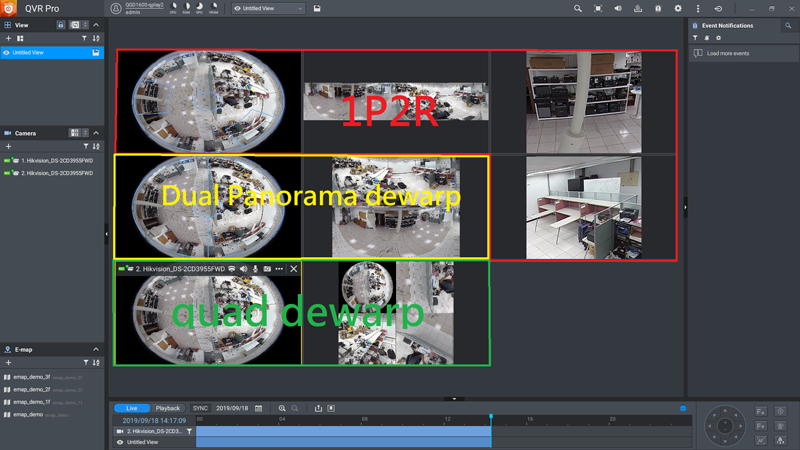
| Task | Steps |
| Regional dewarping |
A new camera cell appears and displays the dewarped image. Tip: You can click |
| Panoramic dewarping | Select one of the following options.
A new camera cell appears and displays the dewarped image. |
| Quad dewarping |
A new camera cell appears and displays the dewarped image. Tip:
|
| Dewarping templates | Select one of the following templates to quickly create a dewarped view.
New camera cells appear and display the dewarped images. |

In the following example, there are 3 different physical fisheye cameras. Each camera can be dewarped using a specific dewarp method and all dewarped views are visible at the same time.

f. Click  beside the view name.
beside the view name.
QVR Pro Client saves all the changes.
3. Optional: Modify the virtual cruising settings.
a. On a dewarped view, click 
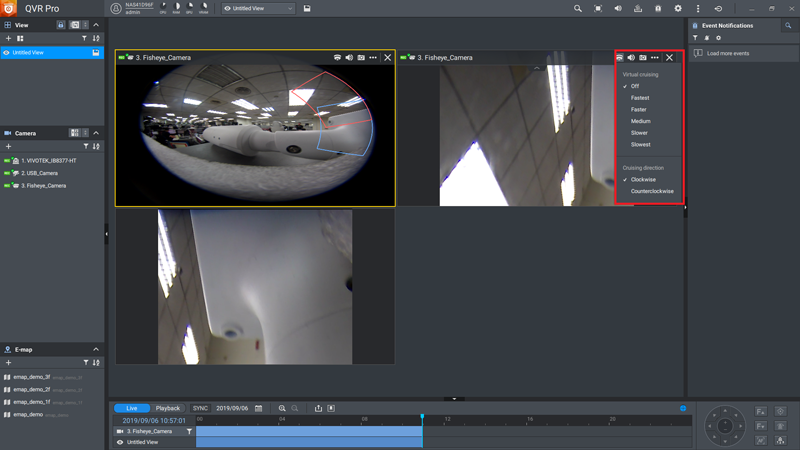
b. Select the virtual cruising setting.
c. Select the cruising direction.
4. Optional: Modify the Qdewarp settings.
Note:
If the views are masked or distorted, you can adjust the fisheye camera view on QVR Pro.
a. Go back to QVR Pro and open Camera Settings.
b. Locate the fisheye camera and then click  .
.
c. Go to Stream & Recording > Stream Settings > Qdewarp Settings.

d. If the view is distorted, go to the Dewarped Area tab and then use the sliders to adjust the dewarped area.

e. If the view is masked, go to the Panorama Area tab and then use the sliders to adjust the panorama area.
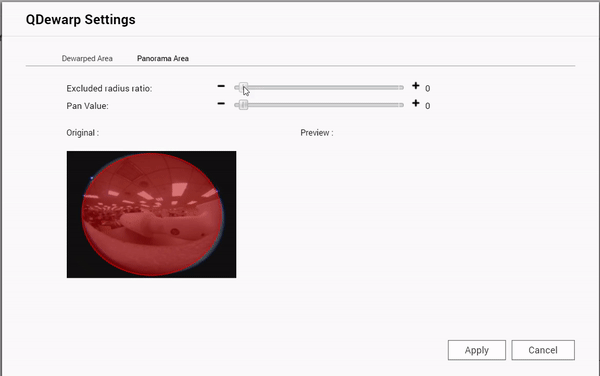
f. Click Apply.
- Last modified date: 2019-12-11